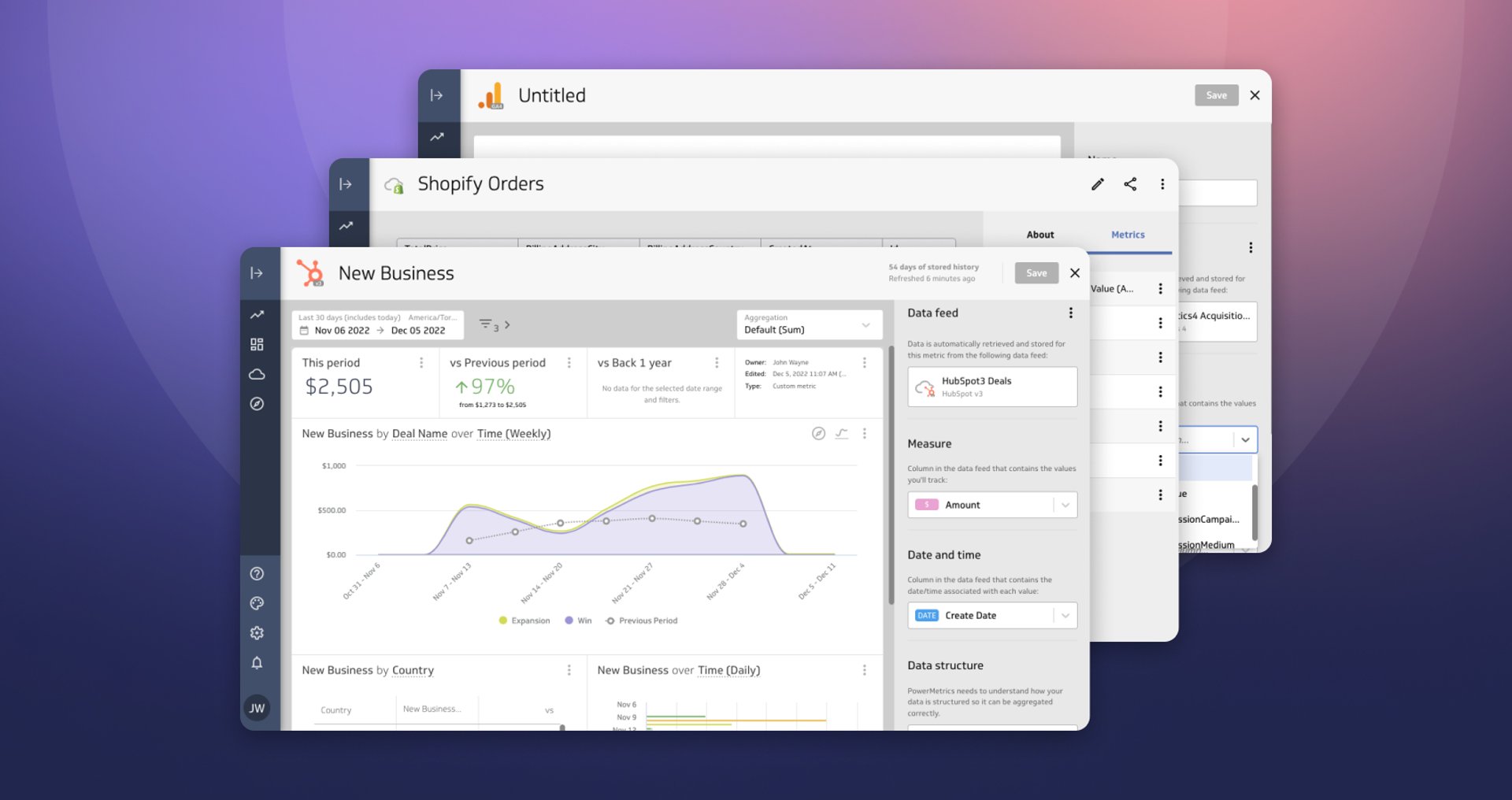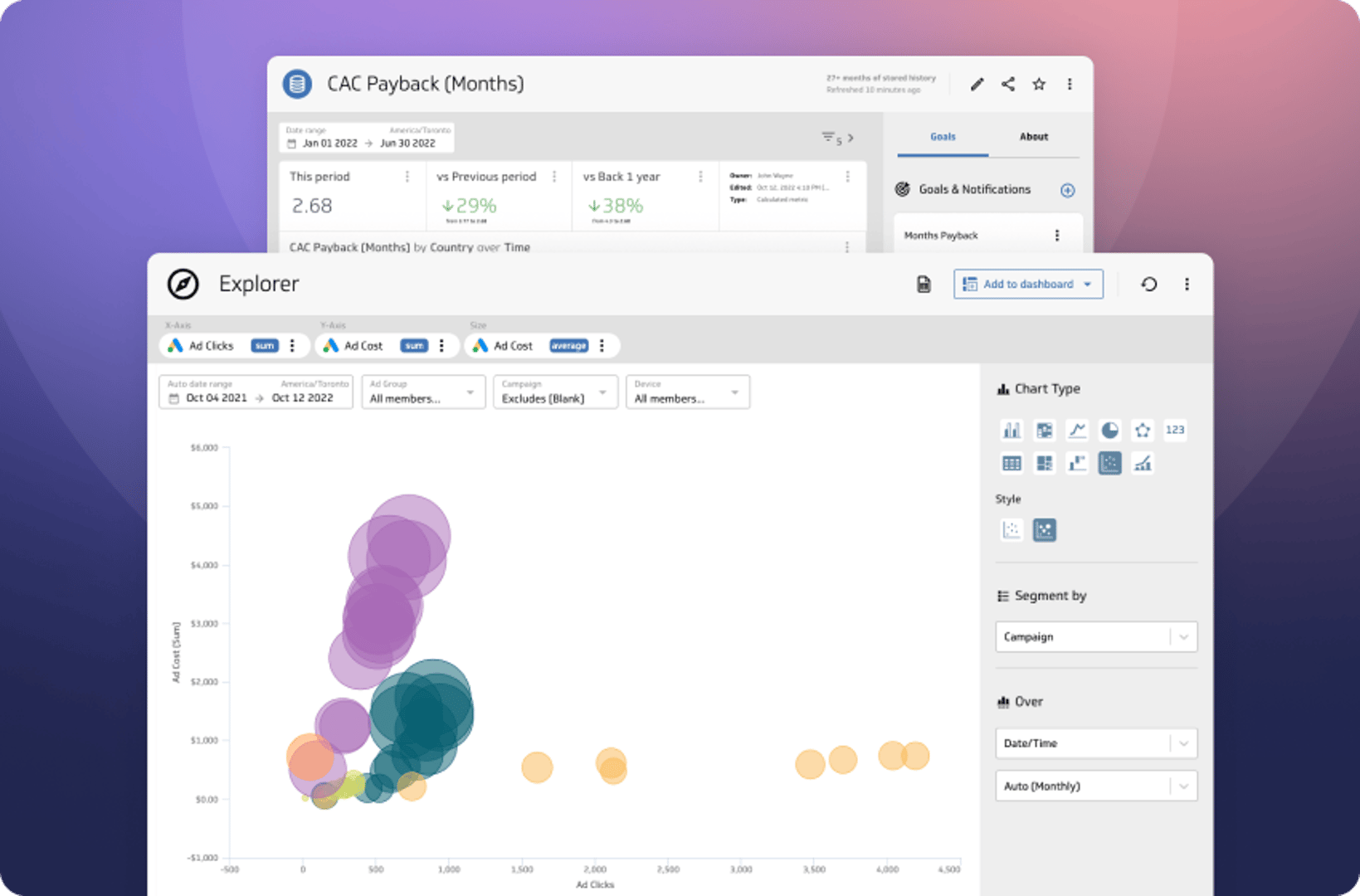Reach company goals faster with leading and lagging indicators
Published 2019-04-09, updated 2022-10-04

Summary - With so many metrics your business can monitor, one way to make it easier is to sort by lagging or leading indicators. But what exactly do they mean?
It comes as no surprise that there is no cookie cutter approach to tracking your company’s success. With so many metrics your business can monitor, one way to make your life easier is by sorting them by lagging or leading indicators as part of your KPI management process. You may have heard these terms come up before, but what exactly do they mean?
Let’s start with a simple definition. In a nutshell, a lagging indicator is like an output: it is easy to measure but hard to directly impact. A leading indicator is the input: something you have control over but is harder to measure. Look at leading indicators as the actions you can take to reach a specific outcome.
Before we get into the weeds on this topic, let’s look at lagging and leading indicators in the context of something we all can understand: weight loss. In order to lose weight, we can easily measure our lagging indicator by simply stepping on the scale. In this scenario, your weight, the output, is hard to improve instantly in that moment, but easy to measure. Our leading indicator, and the one we have a bit more control over would be the food we eat (number of calories) or how often we exercise (calories burned). Although they can be measured, it can be difficult in scenarios such as eating in a restaurant.
What are lagging indicators?
A lagging indicator is measurable, and changes only after trends or patterns are established.
They reveal trends but can’t predict them.
Your past efforts and activities are what influence your lagging indicators and reveal whether you are on your way to reaching your goals. For example, if a company has a specific revenue target for the end of Q1, January’s revenue would be a lagging indicator of whether the company is on track to reach that goal.
So, it is clear that they are a way for us to get on the right track and make better decisions moving forward, not something we can correct.
Some other examples could include:
- MRR
- NPS
- Churn
- Expenses
What are leading indicators?
Leading indicators help us obtain a better sense of direction. It is because of this that they are commonly used by company leaders to adjust strategy and lead the team in the right direction. Identifying and monitoring these leading indicators is key to achieving goals, and will help give you a realistic idea on when and if you will reach them.
*Be sure that when you are selecting your leading indicators, you drill down to figure out which specific metrics will drive your team towards the results you want.
Some examples of specific leading indicators could include:
- Daily number of trials
- Number of pageviews
- Number of blog subscribers
- Number of new accounts
By tracking indicators such as these, you will be able to identify, in real-time, when and if problems arise. This way, a plan of action can be implemented before there is a major negative impact. Catching problems before they arise will also help avoid the risk of their effects on lagging indicators.
Use dashboards to make tracking your leading and lagging indicators easy
Once you have hammered out your leading and lagging indicators, it’s time to track them.
Dashboards, by definition, are information management tools that are used to track business KPIs, metrics, and other key data points relevant to a business, department, or specific process. Through the use of data visualizations., dashboards simplify complex data sets to provide users with at a glance awareness of current performance. In other words, they are the best way to get your team on the same page.
Effective dashboarding practices involve not only understanding the leading and lagging indicators, but choosing the right ones, managing your progress toward them, and managing your team in such a way that regular monitoring actually becomes part of your company's culture. With everyone aware of your key indicators, you will be able to more effectively manage your team’s performance.




